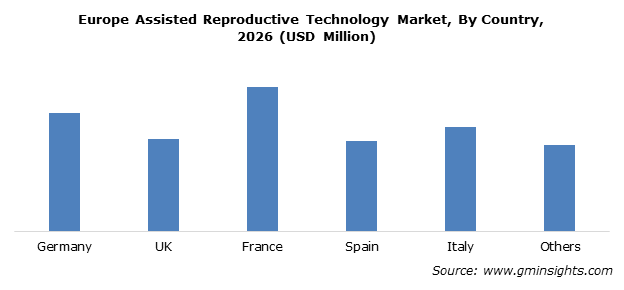Assisted Reproductive Technology Market to collect appreciable valuation via surging demand for IVF over 2016-2023, APAC to majorly drive the regional demand
Publisher : Fractovia | Published Date : 2017-09-22Request Sample
Over the past few years, assisted reproductive technology (ART) market has depicted a plethora of dynamic changes pertaining to the rapid influx of medical advancements for infertile. The rapid economic growth witnessed across numerous geographies has led to an increase in consumer disposable incomes, on the grounds of which it is now possible for many infertile couples to easily avail ART treatments, notwithstanding the exorbitant expense. The rise in the number of couples availing this treatment method is quite evident from the massive rise in the number of ART clinics offering IVF (in-vitro fertilization) services across the globe, the growing popularity of which has been a vital factor augmenting the growth of ART industry.
U.S. Assisted Reproductive Technology Market size by procedure, 2012-2023 (USD Million)

A study conducted by the CDC on fertility clinic success rates across the U.S. in 2015 have unearthed the following data:
- Close to 231,936 ART cycles were performed at 464 clinics in 2015, 60,778 out of which were live births and 72,913 of them were live born babies.
- Around 45,779 cycles from the 231936 were banking cycles, wherein the core focus was laid on freezing the embryos.
- The application of ART in the U.S. has doubled over the last decade, with nearly 1.6% of all infants conceived through ART technique each year.
The aforementioned statistics provide vital evidence of the extensive scope of the ART industry. Assisted reproductive technologies are also used in treating infertility issues related to postmenopausal motherhood, posthumous reproduction, and genetically related gayhood. It is prudent to mention that the ART technique has given rise to new legal and ethical issues across the globe – a factor that is expected to pose certain challenges to the growth of assisted reproductive technology (ART) market over the years ahead.
An influential factor that may provide a boost to assisted reproductive technology market trends is the introduction of contemporary technologies by major companies. Hamilton Thorne Limited, for instance, a leading assisted reproductive technology (ART) industry player, has recently declared the launch of TrakJector™ micromanipulator system, which provides unique and effective solutions for ICSI & embryo biopsies taking place across the ART labs.
It is noteworthy to register the fact that the fluctuating birth rate levels have a profound effect on ART industry since the past decade. As per the reliable sources, birth rates among the U.S women had dropped from nearly 106.2/1000/year in 1950 to approximately about 65.3/1000/year in 2001. The reasons for this fall were attributed to social factors such as late marriages, high incidences of divorces, family planning & contraception, rise in women employment rate, and high rate of education among women. With the passage of time, these factors have proved to lower natural birth rates even further, which would undoubtedly have a marginal effect on ART market.
As per the observations derived from a globally conducted research study in November 2016, single embryo transfer (SET) and frozen-thawed embryos applications had depicted an increase in numbers during the period from 2004 to 2013. The clinical data collected from various regions during the course of the study demonstrated that nearly 7,079,145 ART cycles were performed during 2004-2013 (using fresh and earlier cryopreserved embryos), which resulted in nearly 1,454,724 live births.
The study also depicted that out of the clinical trials performed in Canada, Latin America, Australia, New Zealand, the U.K., Continental Europe, Japan, and the U.S., in 2012, Japan had a SET utilization rate of 82.6% in all ART cycles, while Australia/New Zealand had of SETs in their ART cycles. It was observed that Latin America had the lowest of nearly 16% of SET in its ART cycle. Though a steady increase in the live births was observed in most of the countries, few of them exhibited decline in the live birth rates during the period of study. The inferences derived from the study depict the favorable growth trends of the global assisted reproductive technology (ART) industry.
Analysts claim APAC to emerge as one of the most lucrative growth avenues for companies partaking in ART market share. China, India, and Japan are likely to promote the regional growth – in fact, as per estimates, Japan contributed over 45% toward APAC assisted reproductive technology (ART) industry share in 2015. Another region that is expected to make notable contributions toward the overall ART market is Brazil. In 2015, the region held a valuation of nearly USD 0.62 billion in 2015, and is expected to be the key revenue pocket for LATAM assisted reproductive technology (ART) industry in the years ahead.
Major players including the likes of Thermo Fisher Scientific Incorporation, Irvine Scientific, Smiths Medical, Vitro Life, Genea Limited, and IVFtech ApS are renown to have made exorbitant contributions toward assisted reproductive technology (ART) market size. For the record, it has been forecast that assisted reproductive technology industry will hit revenue of USD 31 billion by 2023, registering a growth rate of 4.4% over 2016-2023.